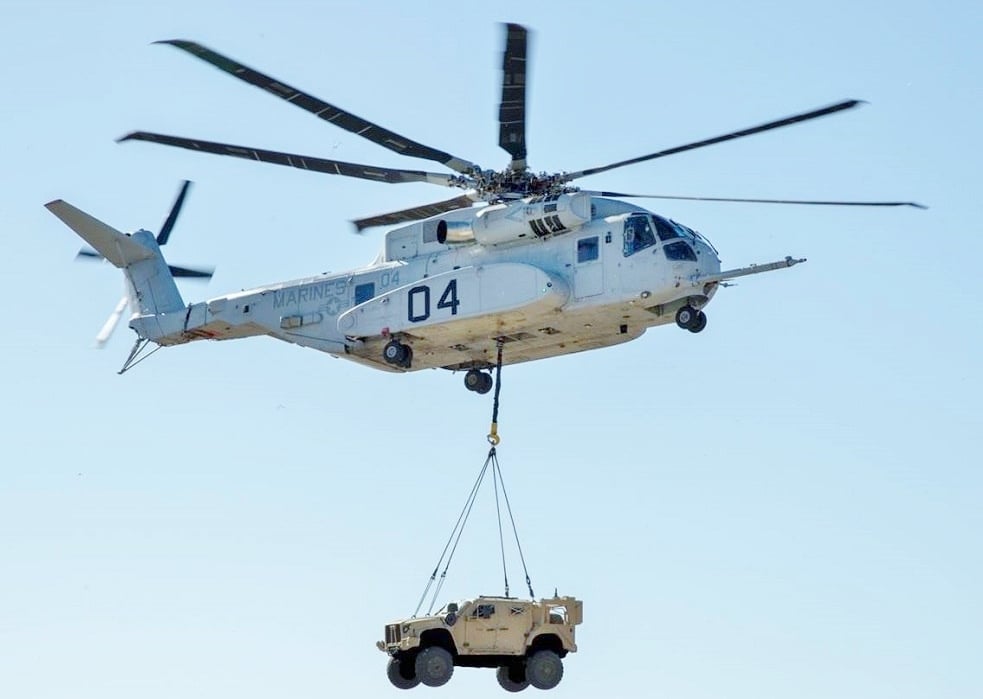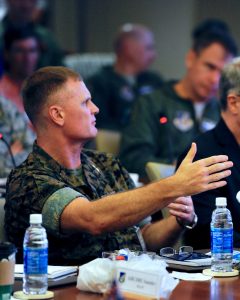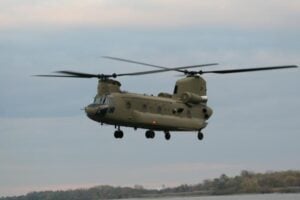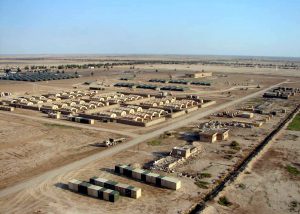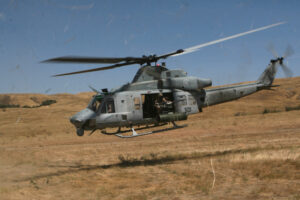Marines: FVL Intriguing, BUT CH-53K Is Essential
Posted on
SEA-AIR-SPACE: “I like where the Army’s going [with] the H-60 replacement,” the Marines’ top aviator said here. “We’re going to be partnered, we’re going to stay right on their wing as they begin to accelerate” the medium-sized variant of Future Vertical Lift.
But, Lt. Gen. Steven Ruder said, for heavy lift — the logistical lifeline of the missile batteries and forward airfields the Marines envision for the next war — the CH-53K King Stallion “is the only aircraft today that can do what we are asking it to do.”
While the Marine Corps is keenly interested in Future Vertical Lift, it is absolutely committed to the CH-53K, despite a troubled development that has Congress demanding a study of other options, like the Army’s CH-47. The Marines are hellbent on their new heavy-lift helicopter in the same way, and for the same basic reason, they pushed through the F-35B and the V-22 Osprey — despite serious problems both programs faced. In each case, the new aircraft allows the Marines to reach farther from amphibious ships and austere outposts, without the need for a full-sized aircraft carrier or a long concrete runway. In each case, the Marines see not just a quantitative improvement in their equipment but a qualitative leap that will make possible new and more ambitious operations. (More on that below).
“We’re confident you are going to help us kill the enemy,” Rudder told a room full of defense contractors at the annual Sea-Air-Space conference outside Washington. “[But] one of the deficiencies in every operation we do is how do we logistically support ourselves.”
That’s where the CH-53K comes in. Despite delays, “the 53K … is maturing and we’re going to deploy this in 2024,” Rudder told me after his remarks to the conference. “Any other capability [would arrive] later, in the 2027-2028 timeframe, which puts us at risk with our older 53Es” becoming too old to fly.
Why wouldn’t the alternatives work?
- The Army’s newest heavy lift helicopter, the CH-47F Block II, can’t carry as much as the CH-53 and would require significant modification for shipboard operations, from folding rotors to refueling probes to protection against corrosion, he said.
- The Marines’ workhorse V-22 Osprey tiltrotor, while faster and longer-ranged than the CH-53, has a much smaller payload: a maximum of 12,500 pounds in a sling under the aircraft, just over a third of the CH-53K’s 36,000 lbs.
- The medium-lift FVL variants being developed for the Army’s Future Long-Range Assault Aircraft — a tiltrotor and a propeller/helicopter hybrid — will be even smaller than the V-22.
- And while Army Secretary Mark Esper is publicly encouraging industry to brainstorm an FVL heavy-lifter that combines CH-47/CH-53-sized payloads with tiltrotor-like speed and range, it’s still at the idea stage. “We have to date not seen movement in the FVL [heavy] arena which allows us to have the confidence that near term we’re going to see the capability,” Rudder told me.
The Marines need to move “22,500 pounds… a hundred miles from ship to shore,” Rudder said. “Tiltrotor is not there yet. It cannot do that.”
But the CH-53K can.
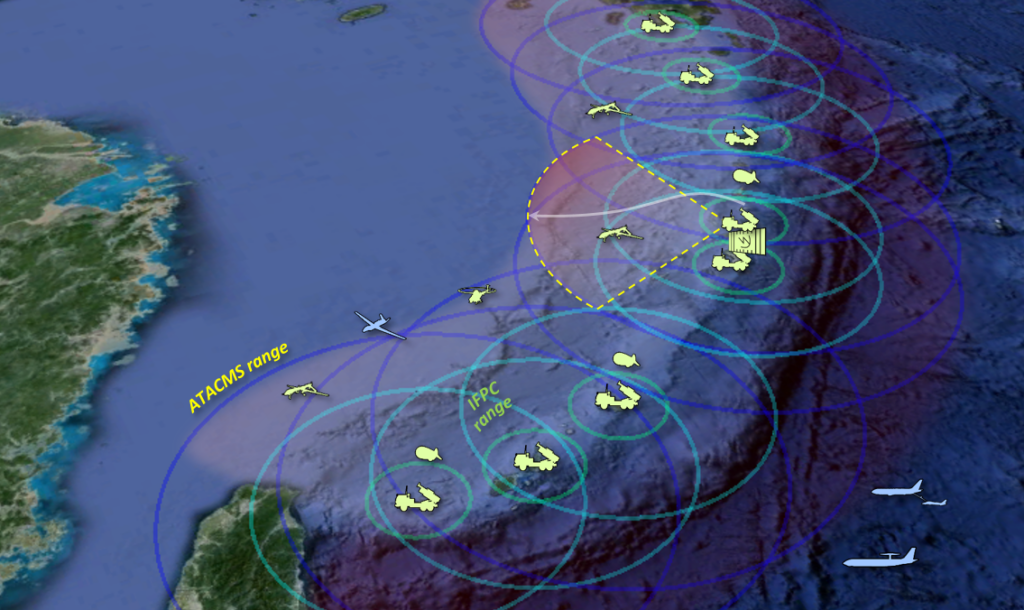
Land-based missiles deployed at “Expeditionary Advance Bases” could form a virtual wall against Chinese aggression (CSBA graphic)
Supplying Island Outposts
So why does the Marine Corps need heavy lift so badly? “We have a requirement that is difficult,” Rudder, the deputy commandant for aviation, told the Sea-Air-Space conference, “because of the weight required for today’s battlefield and the logistics required for distributed operations.” Let’s unpack that.
Weight is an immediate problem, the result of Marine Corps (and Army) vehicles becoming ever heavier to protect against powerful roadside bombs. Just compare the unloaded weight of the original M998 Humvee, at 5,200 pounds, with the new Joint Light Tactical Vehicle, at 14,000 pounds. The CH-53K can actually pick up a JLTV and fly it a hundred miles, Rudder said.
Distributed operations, however, is an issue for the future — albeit a future the Marines want to reach as fast as possible. In Afghanistan and Iraq, US forces built up an extensive infrastructure of large, well-supplied Forward Operating Bases (FOBs) to provide both efficient logistics and protection against insurgents: Car bombs could blow up the gate, unguided rockets and mortar shells could harass the troops inside, but the enemy lacked the firepower to wipe out such a large outpost. But against a high-tech, heavily-armed nation-state like Russia or China, with access to spy satellites, scout drones, and long-range, precision-guided missiles, a big base is just a big target: It’s not a sanctuary, it’s a deathtrap.
That’s why the Marines are all keen on “distributing” their forces across the future battlefield. (The Army and Navy have their own versions of this idea). Instead of concentrating on big bases, units will split up and take cover to avoid a precision-guided barrage. But there’s a catch. By giving up the easily targeted infrastructure, you also give up its logistical efficiency: How do you resupply small units scattered across the war zone?
That’s particularly challenging for the Marines, because their concept for future combat, Expeditionary Advance Base Operations (EABO), calls for establishing small outposts on scattered islands. Each base would have batteries of long-range missiles to shoot down enemy aircraft, intercept enemy missiles attacking US forces, and sink enemy ships. Some bases would have landing areas and, more important, repair, refueling, and rearming facilities for small contingents of F-35B jump jets.
The idea is for each island to extend a “no-go zone” well out to sea, forcing the enemy to take time either destroying the outpost or going around. Collectively, the islands would act like an anvil, with Navy and Air Force forces forming the highly mobile hammer.
(This island-outpost approach would be useful defending the Nordic and Baltic countries from Russian aggression, but it’s most relevant to a Pacific war with China. The use of land bases to extend control over the sea and air is a key component of both the Russo-Chinese tactic of Anti-Access/Area Denial (A2/AD) and the Army-led Multi-Domain Operations concept).
Operating from islands rules out some options like the robotic supply trucks the Army is developing. The Navy-Marine Corps team has decades of experience supplying land forces from the sea, but an enemy with long-range precision missiles could sink supply ships that just hung around offshore, the way the Navy did at Iwo Jima. Keeping the supply ships on the move and well out at sea requires supplies to make the final leg of their journey by air. While V-22s can carry some cargo, wholesale delivery takes heavy lifters like the CH-53.
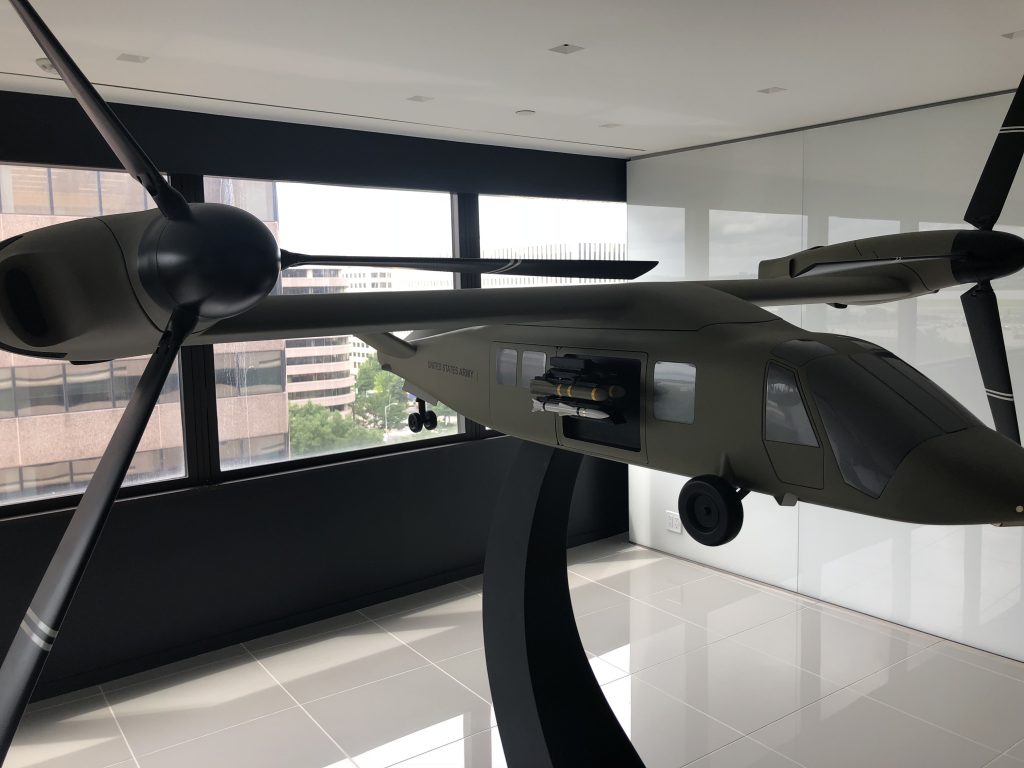
V-280 attack variant, the easy but ugly way: fill the passenger cabin with missile racks sticking out the doors.
Marine Corps FVL
So where does the medium-lift Future Long-Range Assault Aircraft fit in the Marine Corps’ future? While Rudder envisions it carrying some troops and cargo — on a smaller scale than the larger V-22 — he sees its greatest use as an attack and escort aircraft.
“It’s going to replace our H-1s” — the much-upgraded UH-1Y and UH-1Z variants of the Vietnam-era Huey — “in about the 2035 timeframe,” he said. “It would probably be a utility-attack variant that would escort the V-22. Currently today our Cobras — our premiere light attack platform — cannot keep up with the V-22 for escorting it into LZs [landing zones]. We accomplish that with our F-35s,” which are a scarce resource.
Beyond the escort mission, Rudder said, he sees FLRAA operating as a light attack aircraft that combines the speed and range of a fixed-wing turboprop with the versatility of a helicopter, able to operate without a runway from bare-bones Forward Arming & Refueling Points (FARPs) .
“We’d like to have the option of not being wedded to large airbases [with] 8,000, 9,000, 10,000-foot runways,” Rudder said. “That’s what the F-35 does for us, we can go ashore with a 1,000 or 3,000 foot runway, or less, and be able to rearm, reload, and get back up into the fight. We’d like the same conditions for all of our assets coming off the ship.”
Subscribe to our newsletter
Promotions, new products and sales. Directly to your inbox.

